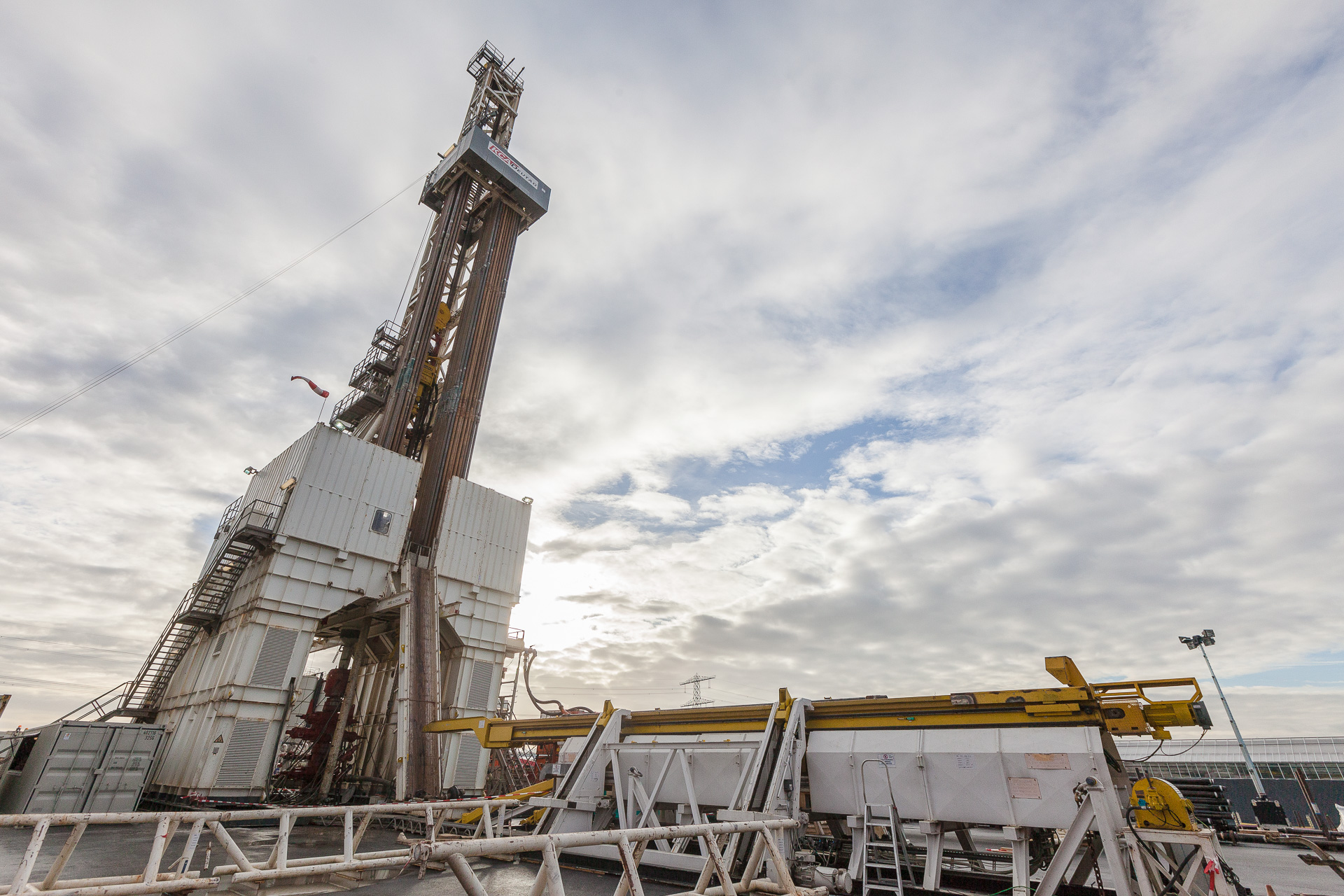Source: Trias Westland
The Trias Westland drilling has reached a depth of approximately 3,600 meters. After some setbacks in December, the work is now proceeding relatively smoothly. And there is good news: the first measurements show that the Lower Cretaceous layer has a lot of potential for regular geothermal projects. Mid-December the second section of the drilling up to 2,500 meters depth was completed without major problems, except for a worn drill bit due to the presence of flint. The casing has been placed in the borehole and firmly cemented.
Section 3
Just before Christmas the drilling of the third section started. In this section a borehole with a diameter of 12 ¼ inches is drilled from a depth of 1,600 meters to approximately 4,000 meters, just above the Triassic layer. The drill team experienced some exciting days: after 200 meters the drill got stuck. The most likely cause was that the drill rod got stuck on the borehole wall due to the suction effect of the sandstone. After four days the problem could be solved by pouring fresh water into the well: this reduced the counterpressure in the borehole and the drill came loose.
Extra engine
Technically, the drilling of section 3 is the most challenging, because of the increased pressure (torque) on the drill rod. This is why a part of the drill rod has been replaced by the Vortex: an additional engine deep inside the borehole. This drill rod contains a kind of propeller which is activated by the circulation of the mud and thus accelerates the speed frequency. Adding the Vortex immediately made a difference. At the beginning of January however, a number of bearings protecting the drill rod had to be replaced because they were worn. Currently we are drilling at a speed of 8 to 15 meters per hour. The well test in the Triassic layer is now scheduled for mid-February.
T&A Survey has been involved in the Trias Westland project from the beginning and is now responsible for the drilling management. Read more about the project.
Foto: T&A Survey / Studio Zwemmer